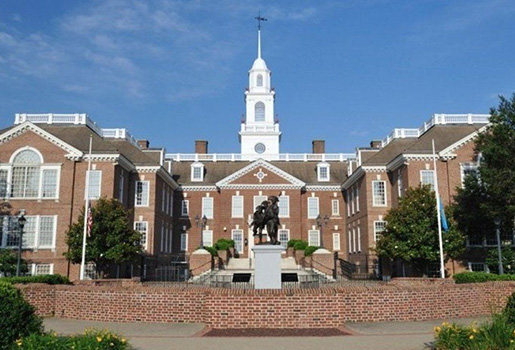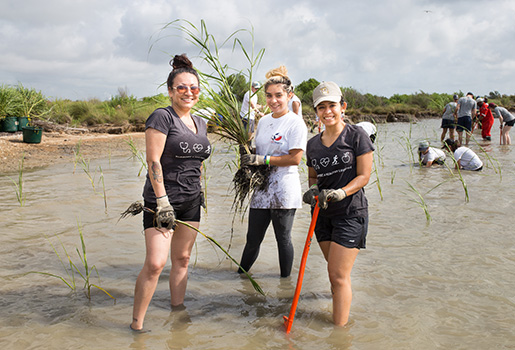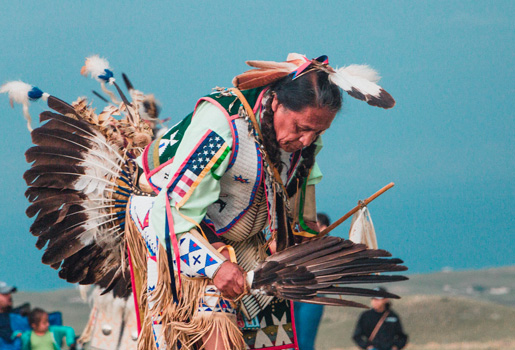Northeast/Mid-Atlantic Project Resources:
Your project may be more successful if you have partners. Partnering with other organizations, businesses, or government agencies may help you obtain funding, share expertise, create a better
project plan, spread the workload, and ultimately have a more successful project.
Partners with experience may be able to advise you on which regional action plans you should consider aligning your project with. Often there are management plans that have been developed for an area and projects are expected to align with those plans to be considered to be fundable. These plans may be local, regional, state, or interstate.

These may be sponsored by your drainage or stormwater utility, public works department, natural resource agency, mayor’s office, or another local agency. Federal agencies typically only have the resources to assist in large projects, but may provide awards to your state or county.
To find your local, state, or tribal governments, type the following into a search engine: your state/county and then the type of agency you are wanting to connect with (e.g., local government, tribal representative, state government). For example, search for “Alabama beach restoration permitting” or “New Jersey environmental protection.” Also try using terms that relate to your concern or solution. For example, “Massachusetts coastal flooding help.” Try different terms, or combinations of terms, such as “grants, restoration, invasive species, marsh, natural resources, volunteers, funding, etc.” It may take a few tries to find the site and information you are looking for.
To find a specific local county office, type the following into a search engine: your local county or city and then the department you are wanting to connect with (e.g., environmental, planning, natural resources). For example, search for “Escambia County coastal management” or “Maine natural resources.

Are there programs to restore your local estuary or shoreline? Are there initiatives to help threatened or endangered fish and wildlife? These programs sometimes have grant dollars.
Many states have the following departments, divisions, or commissions, which you can use as internet search terms:
Many of these organizations are listed as members of the Association of Fish and Wildlife Agencies. Your state’s land-grant university may host a SeaGrant program or a Cooperative Extension Service related to agriculture, conservation. Extension agents can direct you towards helpful resources for your project type.

Environmental groups
Some may focus on local issues. Others may be local chapters of state or national organizations. Always ask if there is anyone else you should be talking to, and who their recommended contact is. Network!
Search for “invasive species councils,” “estuary partnerships,” “national estuary programs,” “coastal invasive plants,” and similar terms to find local or regional groups. Below are some suggestions.
Restore America’s Estuaries is an alliance of 10 community-based conservation organizations focused on coastal restoration.
Marine Invader Monitoring and Information Collaborative (MIMIC) brings together volunteers and scientific experts from state, federal, and nonprofit organizations to monitor for marine invasive species along the New England coast.
Environmental Advocates of New York’s missions is to protect the air, land, water, and wildlife and the health of all New Yorkers. Based in Albany, they monitor state government, evaluate proposed laws, and champion policies and practices that will ensure the responsible steward.
Partnerships for Regional Invasive Species Management (PRISMs) are partnerships in New York (and New Jersey for the Hudson River) that work together in regional groups. There are 8 PRISMs currently.
The Connecticut Invasive Plant Working Group (CIPWG) is a consortium of individuals, organizations, and agencies concerned with invasive plant issues.
Association to Preserve Cape Cod has the mission to preserve, protect, and enhance the natural resources of Cape Cod. They implement a 5-year strategic plan that includes a variety of activities including an invasive species monitoring program and a Native Plant Initiative.
Casco Bay Estuary Partnership is 1 of 28 National Estuary Programs nationwide, and is a collaborative effort of people and organizations interested in protecting and restoring the bay. Partners include local, state, and federal government organizations; non-profits; local businesses; citizens; universities; and more.
Massachusetts Bay Estuary Program is an EPA National Estuary Program dedicated to protecting, restoring, and enhancing the estuarine resources of Ipswich Bay, Massachusetts Bay, and Cape Cod Bay.
Association of New Jersey Environmental Commissions is a statewide organization that provides leadership, education, and support for environmental commissions and other local boards and public officials, and partners with other organizations to advocate for strong state and regional environmental policy.
Virginia’s United Land Trusts (VaULT) serves as the statewide umbrella organization representing about 30 private, non-profit organizations working to conserve Virginia’s natural, cultural, historic, scenic, and recreational resources.
The Nature Conservancy works to conserve lands and waters on which all life depends.
National Association of Invasive Plant Councils lists exotic pest plant councils by state.
Wikipedia lists environmental and conservation organizations in the United States.
Neighborhood organizations may be a resource for community outreach and volunteers.
Schools may be a source of volunteers.
Look for local businesses and business organizations that may have a stake in a cleaner environment.

Tribes and Indian Nations should be consulted about their interests in the area of the project.
Tribes and Indian Nations may have treaty rights that need to be observed and cultural resource concerns that apply to your project, especially if ground disturbance is involved in your project.
Tribes and Indian Nations often have resources that can help with your project. They often manage monitoring and research projects, and that information may be very helpful in the development of your project.
Contact the Tribe’s or Nation’s natural resource department early in the project. Click here for help finding recognized tribes and their leaders or here for help finding non-federally recognized tribes.
Learn more about partnering with Tribal Nations and incorporating Indigenous Knowledge.
We need your help to improve the Toolkit by completing our easy, 3-minute survey. Your insight is valuable to us.